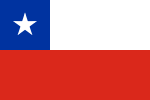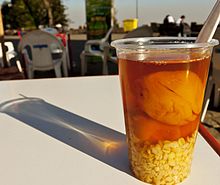
Back Chileense kookkuns Afrikaans مطبخ تشيلي Arabic Чылійская кухня Byelorussian Gastronomia de Xile Catalan Chilská kuchyně Czech Chilenische Küche German Ĉilia kuirarto Esperanto Gastronomía de Chile Spanish Tšiili köök Estonian Txileko gastronomia Basque
| Part of a series on the |
| Culture of Chile |
|---|
 |
| History |
| People |
| Languages |
| Cuisine |
| Religion |
| Sport |


Chilean cuisine[1] stems mainly from the combination of traditional Spanish cuisine, Chilean Mapuche culture and local ingredients, with later important influences from other European cuisines, particularly from Germany, the United Kingdom and France. The food tradition and recipes in Chile are notable for the variety of flavours and ingredients, with the country's diverse geography and climate hosting a wide range of agricultural produce, fruits and vegetables. The long coastline and the peoples' relationship with the Pacific Ocean add an immense array of seafood to Chilean cuisine, with the country's waters home to unique species of fish, molluscs, crustaceans and algae, thanks to the oxygen-rich water carried in by the Humboldt Current. Chile is also one of the world's largest producers of wine and many Chilean recipes are enhanced and accompanied by local wines. The confection dulce de leche was invented in Chile and is one of the country's most notable contributions to world cuisine.[2]
Chilean cuisine shares some similarities with Mediterranean cuisine, as the Matorral region, stretching from 32° to 37° south, is one of the world's five Mediterranean climate zones.
- ^ Gastronomy, Chile’s top traditional foods: a visitor’s guide Archived 11 November 2013 at the Wayback Machine 29 July 2009 retrieved 6 August 2013
- ^ "Origen mítico del dulce de leche" [Mythical origin of dulce de leche]. Clarín (in Spanish). 6 April 2003. Archived from the original on 1 July 2010. Retrieved 2 June 2014.
© MMXXIII Rich X Search. We shall prevail. All rights reserved. Rich X Search